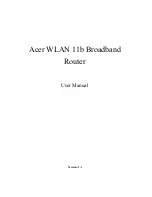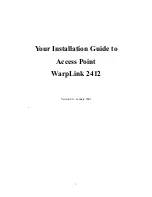
96
97
96
The following sections describe how to configure Quality of Service queues on the
D-Link DWL-2210AP:
• Understanding QoS
• QoS and Load Balancing
• 802.11e and WME Standards Support
• QoS Queues and Parameters to Coordinate Traffic Flow
• Navigating to QoS Settings
• Configuring QoS Queues
• Updating Settings
Understanding QoS
A primary factor that affects QoS is network congestion due to an increased number
of clients attempting to access the air waves and higher traffic volume competing for
bandwidth during a busy time of day. The most noticeable degradation in service on a
busy, overloaded network will be evident in time-sensitive applications like
Voice-over-
IP
(VoIP) and streaming media.
Unlike typical data files which are less affected by variability in QoS, VoIP and streaming
media must be sent in a specific order, at a consistent rate, and with minimum delay
between
Packet
transmission. If the quality of service is compromised, the audio or
video will be distorted.
QoS and Load Balancing
By using a combination of load balancing (see “Load Balancing” on page 95) and QoS
techniques, you can provide a high quality of service for time-sensitive applications
even on a busy network. Load balancing is a way of better distributing the traffic volume
across access points. QoS is a means of allocating bandwidth and network access
based on transmission priorities for different types of wireless traffic within a single
access point.
802.11e and WME Standards Support
QoS
describes a range of technologies for controlling data streams on shared network
connections. The
IEEE 802.11e
task group is in the process of defining a QoS standard
for transmission quality and availability of service on wireless networks. QoS is designed
to provide better network service by minimizing network congestion; limiting
Jitter
,
Latency
, and
Packet Loss
; supporting dedicated bandwidth for time-sensitive or mission
critical applications, and prioritizing wireless traffic for channel access.
Utilization rate limits relate to wireless
bandwidth utilization.
Provide a bandwidth utilization rate percentage
limit for this access point to indicate when to
disassociate current clients.
When the utilization rate exceeds the specified
limit, a client currently associated with this
access point will be disconnected.
If you specify 0 in this field, current clients will
never be disconnected regardless of the
utilization rate.
Configuring Queues for Qualty of Service (QoS)
Summary of Contents for AirPremier DWL-2210AP
Page 193: ...193 ...
















































